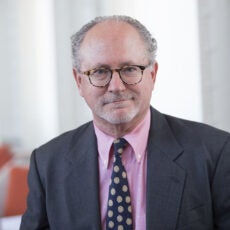
This Year’s Carnot Prize Honors Courage Amidst Complexity
India shows us what any just energy transition must provide—power to the poor.
In 2000, 43% of India’s population had electricity. Today, electricity now reaches 82% of the population. If this pace is maintained, India will achieve universal access in the early 2020s and achieve one of the largest successes in the history of electrification, according to projections from the International Energy Agency.
India has recently advanced the successful electrification of nearly 18,000 remote villages in some of the most inaccessible parts of the country, and half a billion people in India have gained access to electricity.
Today, India’s leadership faces a difficult balancing act. It must keep villages energized with reliable power while delivering energy in the most sustainable way. For India, with its existing mix of resources, the resulting approach is to use both renewables and coal (delivered to power plants by railway).
This year’s Carnot Prize provides a “teaching moment” at Penn and in the U.S. to explore the ideas behind a just and sustainable energy transition and the common but differentiated responsibilities among nations to mitigate effects of energy systems on climate change.
A sustainable transition must avoid the worst effects of climate change by ensuring that global emissions peak quickly and fall steeply in coming decades, staying within a global “carbon budget” of emissions we can release into the atmosphere.
Like China and the United States, India has achieved much of its electrification with coal. During its energy expansion, India has more than tripled its coal fleet to 215GW, and now ranks fourth in the world for CO2 emissions (after China, the U.S., and the EU). But with 48GW of planned coal retirements (due in part to new air pollution rules), and 17GW of new coal capacity stalled or in limbo, it appears that coal expansion in India has peaked. The tide has shifted to phasing out coal and phasing in renewables.
A sustainable energy transition must also be a just transition. In other words, we must balance the haves and the have-nots. A just transition provides power to the world’s energy poor, in order to improve education, sanitation, and health care. By helping countries power up, we strengthen governments, spur economic growth, and open the doors to trade.
Climate change is a global problem that requires effort by every nation. But how to allocate that effort among nations is a political and moral choice.
According to a peer-reviewed study published in Nature Climate Change, if every nation shared the remaining carbon budget in proportion to how much each country currently emits, the U.S. would have to reduce its emissions by 5% per year (about 60 years of emissions) and India by 3.5% per year (about 85 years of emissions).
But the U.S. has been emitting CO2 into the atmosphere since it helped launch the Industrial Revolution in 1750. If every nation shared the remaining carbon budget in proportion to how much each country has emitted since 1750, the U.S. would have to reduce its emissions by 16% per year (about 25 years of emissions) and India by 2.5% per year (about 120 years of emissions).
This example shows the connections among the future emissions by every nation on earth. Every ton emitted by the U.S. is a ton that might have been emitted by India instead, and perhaps with a greater claim to fairness.
The U.S. is arguably the most advanced energy economy in the world and yet 18% of our primary energy in 2017 came from coal. The emissions from that coal could be used by India to end the energy poverty of hundreds of millions of people.
This year’s prize, to be announced soon, will recognize courage amidst the complexity in moving our planet toward a more just and sustainable energy future.
Mark Alan Hughes
Director EmeritusMark Alan Hughes is director emeritus of the Kleinman Center. During his time as faculty director, he led the Center and wrote on topics ranging from deep decarbonization to the future of Philadelphia’s energy landscape.

